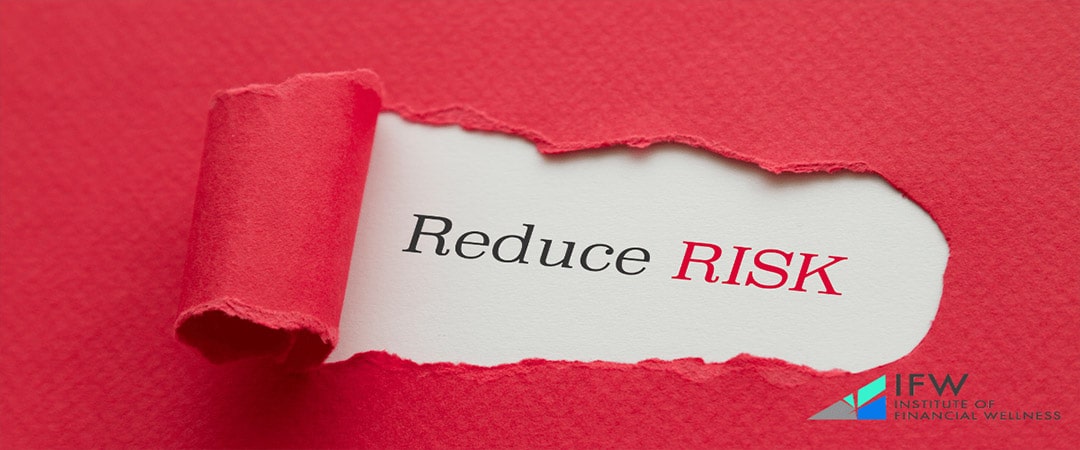“I will tell you how to become rich. Close the doors. Be fearful when others are greedy. Be greedy when others are fearful.” Warren Buffett.
If only it were that simple Warren… For those of us who need a little more retirement planning advice, let’s dive a little deeper.
If you’re seeking to secure your investment portfolio against market ups and downs or economic downturns, our comprehensive guide will provide the information required. We’ll review a range of strategies for asset allocation, diversification, and fixed-income investments in order to reduce risk levels while also helping to achieve financial stability long term.
Key Takeaways
- Understanding portfolio protection and risk management is essential for financial success.
- Utilizing fixed-income investments, asset allocation strategies, diversification techniques, and alternative investment options can help reduce losses while optimizing returns.
- Choosing the right investment manager with expertise in risk reduction strategies will ensure a secure portfolio to meet financial goals.
Understanding Portfolio Protection
Portfolio security is a crucial part of minimizing losses and maximizing returns. Those who plan will succeed. The early bird gets the worm. Cynics get to be right, planners get to be rich.
There are so many great mindsets that discuss portfolio protection.
Investors who have put plans in place for reducing market risk during times of volatility will be able to benefit from potential investments while creating an effective defensive portfolio strategy.
But what are the steps involved with constructing and protecting such portfolios? Here, we explain the importance of properly managing risks as well as how necessary it is that investors create safe money-making initiatives through secure strategies focusing on their financial growth goals.
The Role of Risk Management
The implementation of a stop loss order is often recommended, which directs brokers to trade the stock when it reaches an agreed-upon price. This method has both supporters who see it as a market safeguard against volatile fluctuations and opponents who say such orders make losses eternal. Determining whether or not hard stops are beneficial will depend on what transpires in the markets afterward.
Don’t be hasty! Investors should establish how much danger they want to take with their investments plus any desired timeline before investing so they have an optimal strategy for themselves. This is where planning comes into play. Building up conservative portfolios is a suitable choice for those willing to accept minimal risks, but expertise and understanding grant better insight into investment selections overall.
Importance of a Safe Portfolio
This one is pretty self evident. Safe portfolios are those that are not negatively affected by market volatility… or at least not drastically affected. If your retirement financial freedom is important to you (and why wouldn’t it be), then safety is the name of the game.
Creating a secure portfolio is essential for mitigating losses while boosting returns. That’s the dream.
Risk control methods are necessary to protect the investments, as they allow recognition of probable risks as well as evaluating and controlling them. Fixed income instruments such as bonds can be implemented in order to shield the portfolio from unexpected changes by providing consistent earnings flow with minimal volatility.
By diversifying assets among various asset classes through asset allocation techniques, one can minimize risk levels yet attain high-yield gains. An important part is rebalancing, which safeguards that appropriate diversity along with suitable hazard regulation has been achieved within your investment strategies and fixed-income portfolios alike.
Fixed Income Investments for Stability

Fixed-income investments such as bonds and debt instruments can offer a stable income stream while also lowering overall volatility within your portfolio. Brace yourself and read about the advantages of different forms of fixed-income securities in safeguarding investment stability during turbulent times.
Types of Fixed Income Securities
Fixed-income investments are financial instruments that provide a steady rate of return over a predefined period. These securities can be issued by various entities, like governments or corporations, and the most popular ones include Treasuries from the US government (which have low risk since they’re backed by its full faith and credit), corporate bonds with higher yield but greater default risks, municipal bond funds for tax-advantaged returns on local debt issues.
As well as mutual funds and exchange-traded fund holdings in multiple types of fixed-income vehicles. While all these instruments have their own unique features along with varying degrees of risks involved when investing in them – it is important to consider one’s personal investment goals before making any decisions about which security will suit best your portfolio needs.
Advantages of Fixed Income Investments
Fixed-income investments are a lower-risk alternative to other investment options, providing consistent payments. Those nearing retirement or those looking for dependable returns typically turn to such fixed-rate products.
Nonetheless, there is still an inherent risk associated with these types of investments – including the possibility of losing principal during times when interest rates fluctuate, credit quality changes, and market valuations decline.
Investors must factor in liquidity issues and prepayment conditions as well as corporate events involving Secured Investment Corp that could lead to early redemption along with tax implications, which should all be taken into account before investing through accredited investor portfolios.
Asset Allocation Strategies for Portfolio Protection

To maximize protection, it is crucial to establish one’s level of tolerance for danger while properly reallocating investments with regard to asset distribution. This process helps craft an assorted pool of assets that can outlast market jolts.
We will now examine the procedure necessary to gauge hazard resistance and redress invested resources so as to safeguard investment portfolios accordingly.
Determining Your Risk Tolerance
It is essential for an investor to assess their own risk tolerance in order to have a successful investment portfolio. Risk tolerance refers to the level of danger that someone feels comfortable with when investing money into different assets or investments. Analyzing financial objectives, available time frames, and personal disposition can help determine one’s level of acceptability towards risks associated with various kinds of investments.
Periodic assessment of individual risk tolerances should be done so that investors maintain updated portfolios along with asset allocations tailored specifically for them based on the degree of tolerated peril versus expected returns over a given period.
Rebalancing for Optimal Allocation
Adequately balancing a portfolio is essential for upholding the intended asset allocation and reducing risk. This means selling assets that have advanced in value while simultaneously buying ones that are depreciating to make sure the portfolio remains within one’s own tolerance of hazard and financial aims.
Failing to rebalance when stocks increase can cause an unequal equity distribution, making it more likely you will be faced with higher levels of risk – routinely auditing and reconfiguring your investments provides assurance that they still fit your objectives as well as how much danger you’re willing to tolerate.
Diversification Techniques for Reducing Risk

When it comes to investing and managing risk, diversifying your portfolio is a great strategy. By allocating assets across different sectors, locations, and unrelated investments, you can reduce the impact of market fluctuations on your financial success in the long run.
Let’s go over techniques that can help reinforce protection for an investment portfolio.
Investing in Non-Correlated Assets
These investments don’t necessarily follow the same trends as other asset classes and may even increase in value while stocks decline. Examples include bonds, commodities, and real estate, all providing consistent returns that are not tied directly to how well or poorly the markets perform.
This will also ensure you have some stability through fluctuations seen on different investment levels throughout time.
Sector and Geographic Diversification
The importance of sector and geographic diversification cannot be understated when it comes to creating a balanced portfolio. Spreading out investments among different countries limits fluctuations within any single market that could cause major damage to your assets. By implementing these strategies into your investment plan, you can drastically lower the overall risks as well as achieve better outcomes in terms of long-term success.
Alternative Investment Options for Portfolio Protection

Real Estate Notes: An Overview
These documents signify an agreement between the lender and borrower, which can be bought and sold on the market by investors looking to make money through real estate investments. In terms of notes, ones in good standing (where payments are being made regularly) could be described as performing.
Whereas those not meeting requirements would fall under non-performing records. Evaluating the past performance of such instruments can help guide potential investors with assurance while reaping expected gains without having capital tied up long-term.
Mortgage Notes: A Safe Investment?
It is important to remember that there are various risks present when investing in mortgage notes, such as default and prepayment risk. Thus, one should assess all potential pros and cons before introducing these documents into their investment plans.
A mortgage note outlines the specifics of a loan contract between borrower and lender, including details like the amount borrowed, repayment terms, and rate of interest, plus any other conditions agreed upon at closing – making them legally binding records requiring signatures from both parties involved prior to commencing with transaction activities.
In other words, knowing what you’re signing up for ahead of time while dealing with mortgages can help protect your assets while also maximizing returns on investment opportunities within this financial instrument known as the ‘mortgage note’.
Utilizing Investment Management Services

Investment management services, such as the ones offered by the Institute of Financial Wellness, offer the benefit of having experienced professionals helping to minimize risk and select optimal investments for your portfolio. To safeguard financial objectives, it is essential to consider strategies that reduce investment risk as well as determine a process for selecting an appropriate manager or service provider. With their expertise in investing, they can assist you with attaining those goals while also minimizing related risks associated with your portfolio.
Expertise and Experience

Experienced investment managers provide advice on how best to diversify investments and manage risk, as well as keep up-to-date with changes in market conditions so that decisions can be made intelligently.
Investment professionals have an integral part to play in managing portfolios, including researching potential choices, evaluating performance levels, plus making any necessary adjustments for optimum results. Their skill set, coupled with expertise, is often invaluable when navigating the complexity involved within investing activities, which supports safeguarding portfolios successfully, too.
How Can You Minimize the Risk from Your Investments?
Asset allocation entails diversifying investments across various asset classes so as not to incur losses due to market instability while maintaining the desired level of volatility.
Fixed-income instruments like bonds and debt securities can also be used by providing a steady stream of income, thereby reducing risks even further. An experienced team of financial advisors is crucial in deploying these tactics with precision for investors seeking stability from their capital gains or otherwise.
Choosing the Right Investment Manager

When choosing an individual to manage your assets, it’s essential that they possess key qualities such as being proactive, organized, analytical, and have integrity. Having situational awareness along with investing experience, and knowledge of financial matters should be taken into account, too.
Institute of Financial Wellness: Financial Resources for Your Portfolio
The Institute of Financial Wellness offers a wide range of financial resources and services to assist individuals in protecting their portfolios as well as achieving their desired financial goals. As part of our mission to help people improve their overall financial situation, this network provides comprehensive educational material and tools that can be used for long-term success.
Full Summary
Creating a secure investment portfolio is of the utmost importance for achieving and maintaining financial stability. There are various strategies to do so, including fixed-income investments, asset allocation, diversification, and alternative investments. All of these work together to preserve your funds even when there are market fluctuations or economic downturns.
Professional guidance, such as from the Institute of Financial Wellness, can help you stay on track with reliable knowledge, which will aid you in reaching your desired goals through successful management techniques.
Frequently Asked Questions
What is portfolio protection?
Portfolio Protection is an AI-powered system that helps to proactively identify and manage potential market risks by putting in place strategies for hedging. These approaches are tailored towards monitoring changes in the overall marketplace, along with interest rates, volatility levels, as well as oil prices.
How can fixed-income investments provide stability to my portfolio?
Fixed-income investments can provide stability to a portfolio by offering fixed returns and decreasing volatility. These types of investments are known for their dependable payments, thus providing consistent results.




